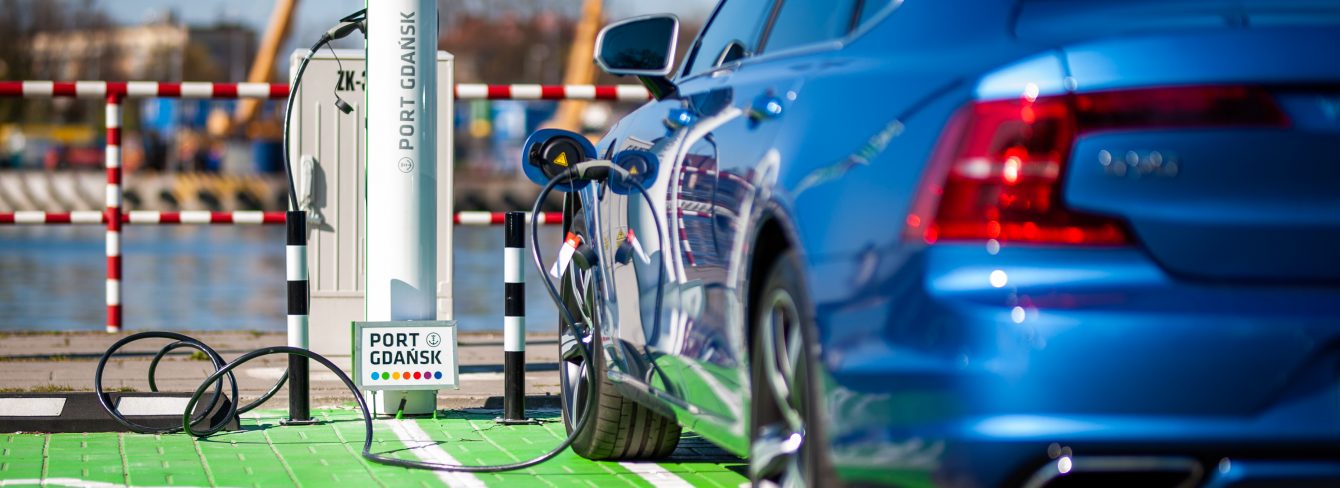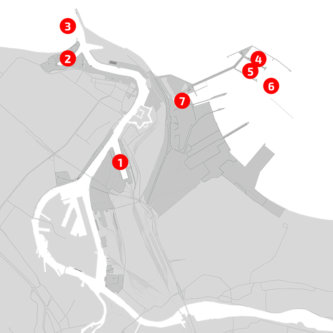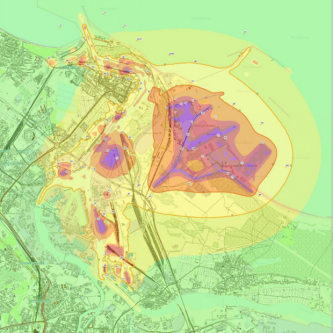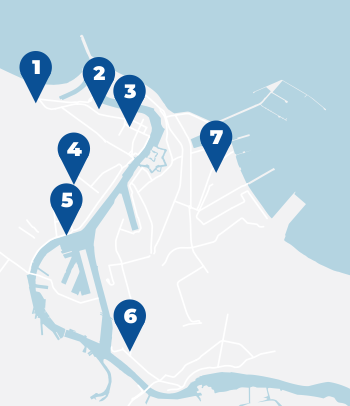

Port Water Testing
Pursuant to the Regulation of the Minister of Environment dated 16 June 2011, Port of Gdańsk Authority SA is obligated to conduct testing of contaminant levels in the surface waters of port bodies of water.
Currently the testing is being conducted at 7 sites, which are located in the central sections of the port basins and at the entrance to the inner port, i.e.:
Measurement point 1 – Węglowy/Górniczy Basin
Measurement point 2 – Władysława IV Basin
Measurement point 3 – Port Entrance
Measurement point 4 – Fuel Basin no. 1
Measurement point 5 – Fuel Basin no. 2
Measurement point 6 – Turning Basin in the North Port
Measurement point 7 – Internal Working Basin
Contaminant testing is conducted twice a year, i.e. in April and in October, and includes measuring the levels of the following substances:
- biological oxygen demand (BOD5)
- chemical oxygen demand (CODCr)
- pH
- total suspensions
- lead
- cadmium
- zinc
- oil-derivative hydrocarbons
The tests are conducted in cooperation with the Environmental Protection Department of the Maritime Institute of the Gdynia Maritime University, supervised by an Environmental Protection Specialist from Port of Gdańsk Authority SA. Sampling is performed with the use of the “PORTOWIEC” vessel.
Port water contaminant measurements are performed for substances and parameters in compliance with the reference methodologies listed in appendix 4 to the regulation of the Minister of Environment dated 16 June 2011 concerning requirements related to performing measurements of substance or energy levels in the environment by entities managing roads, railway and tram lines, airports, ports. Below is a summary of results from tests conducted from 2019 to April 2021.
Test report No. 107/19 (in Polish)
Test report No. 333/19 (in Polish)
Test report No. 110/20 (in Polish)
Test report No. 301/20 (in Polish)
Test report No. 119/21 (in Polish)
Test report No. 355/21 (in Polish)
Test report No. 133/22 (in Polish)
Test report No. 316/22 (in Polish)
Test report No. 125/23 (in Polish)
Test report No. 336/23 (in Polish)
Test report No. 122/24 (in Polish)
Test report No. 355/24 (in Polish)

Noise measurements
Port of Gdańsk Authority SA is obliged to perform periodic noise measurements. The last one was made in 2016. They take into account ship traffic, including noise from the operation of equipment and systems as well as the infrastructure used for the port activity and the infrastructure for transshipment located outside the premises of PGA SA, but related to the activity of the Port of Gdańsk. The measurements were made both during the day and at night.
The tests were performed at a total of 75 onshore and offshore points.
The tests of environmental noise levels did not reveal any exceeded limits in any of the test points during the daytime.
Only one test point was found with the maximum environmental noise limit exceeded at night. The point was located on the border of mandatory noise abatement areas. According to a completed simulation, the exceeded noise limits were from road noise and not any industrial noise related to cargo ship handling operations. The industrial noise level generated by cargo ship handling at night was below 45 dB.
Air pollution
In 2003, Port of Gdańsk Authority SA requested the development of the “Study of air protection for the Port of Gdańsk”. It covered areas under the authority’s control and those leased by clients whose activities caused emissions of pollutants into the air. Based on these documents, the Pomeranian Voivode issued permits to discharge gases and dust into the air. The analysis of the nuisance of emission sources in the port area showed that there were no exceeded values of particulate matter on the border of individual terminals and port companies or on the border of PGA SA. In the following years, comprehensive inspections were carried out at PGA SA and in companies operating in port areas. These also showed no irregularities in emissions into the air. In 1996-2006, PGA SA modernised the heating system. The central coal-fired boiler room was closed and replaced with 9 new high-efficiency gas and oil boiler rooms and a heat pump. Several buildings were also thermally insulated. The modernisation led to a considerable environmental effect, reducing the amount of pollutants emitted into the air. Equivalent gas and dust emissions decreased by 98.9%. The ultimate reductions in air pollutant emissions are as follows: sulphur dioxide by 65.7 t/year, nitrogen dioxide by 6.2 t/year, carbon monoxide by 230.9 t/year, dust by 82.2 t/year, carbon dioxide by 8,111 t/year. At the same time, the port eliminated the emissions of benzo-a-pyrene (0.072 t/year) and soot (3.8 t/year) as well as fugitive emission from coal and combustion waste landfills (disposal of solid waste from the combustion of coal).
Accumulation risk:
Combating threats and pollution
Activities related to combating threats and pollution at the Port of Gdańsk are carried out according to the “Plan for combating threats and pollution in port waters managed by Port of Gdańsk Authority SA” approved by the Director of the Maritime Office in Gdynia by decision no. 8201/5/04 of 02.12.2004. The plan was updated in April 2012 and approved by the Director of the Maritime Office in Gdynia by decision no. 076/46/12 of 22.06.2012. Potential sources of threats and pollution in port waters are:
- sewer outlets for discharge of sanitary, industrial and rainwater sewage
- transshipment processes at the quays
- construction, renovation or maintenance works
- operation of ships
- collection of waste from ships
Any reported irregularities are immediately handled by the port fire service: Portowej Straży Pożarnej “FLORIAN” Sp. z o.o. or Straż Ochrony Portu Gdańsk Sp. z o.o. Emergency telephone number – 111 Municipal telephone number – (+48) 58 343 11 20



